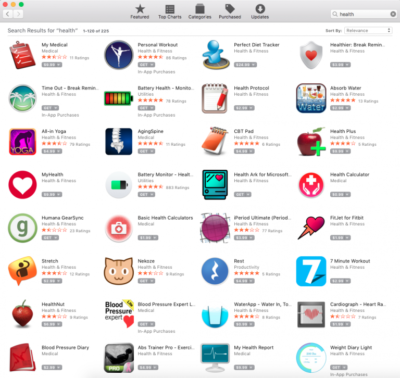Mobile Healthcare Bridges Providers-Patient Gap
Doctors, Patients, and Mobile Healthcare
Although many laws such as the ACA and HITECH Act have been enacted within the past decade to help transform the healthcare industry, numerous problems relating to healthcare have yet to be solved. One of the biggest questions in healthcare is the disconnect between the healthcare provider and the patient. According to a recent Xerox Healthcare research report, big disconnects exist between patients and healthcare providers with doctors and patients often having very different viewpoints regarding consumer health responsibilities and other aspects of healthcare.
Mobile technology can is helping to bridge the gap between the healthcare provider and the patient.
Improve access to patient information
Some of the transformation of healthcare has focused on the adoption of patient-facing healthcare applications and providing patients with easy access to their healthcare data. It’s not just patients who would like to have easy access to their healthcare data, though. Healthcare providers would like to be able to access patient data from one mobile device quickly. Often, healthcare providers must use multiple systems to find all of the information they need about the patient.
Physicians, hospitals, and other healthcare providers can use mobile technology to gain better access to patient medical records, records that include patient medical history, current prescriptions, hospital visits, etc. The iVEDiX physician rounding application, for example, is capable of securely accessing information from multiple systems and EMRs allowing clinicians to obtain a unified view of patients. The ability to quickly access and analyze patient data allows doctors to serve their patients better helping to improve their overall health and quality of life.
Facilitate better communication
 There are numerous mobile applications available today that can facilitate better communication between the patient and the healthcare provider. Healthcare providers can use mobile technology to allow patients to ask questions via text or by engaging with an AI-powered chatbot quickly receiving responses to their healthcare inquiries. Hospitals and outpatient surgery centers can use mobile applications such as text and email to provide patients aftercare instructions and follow up with patients after procedures. Applications like the iVEDiX physician rounding application allow doctors to have more quality face-to-face time with patients allowing for better communication.
There are numerous mobile applications available today that can facilitate better communication between the patient and the healthcare provider. Healthcare providers can use mobile technology to allow patients to ask questions via text or by engaging with an AI-powered chatbot quickly receiving responses to their healthcare inquiries. Hospitals and outpatient surgery centers can use mobile applications such as text and email to provide patients aftercare instructions and follow up with patients after procedures. Applications like the iVEDiX physician rounding application allow doctors to have more quality face-to-face time with patients allowing for better communication.
Mobile technology can also be used to facilitate better communication between doctors and other healthcare professionals in the field. The iVEDiX Public Health Management application, for example, can be utilized by organizations to connect field agents with global ambassadors and share intelligence via mapping tools and advanced visualizations. The iVEDiX platform is currently being used by the UNAIDS organization to enhance their situation room solution and share AIDS data and visualizations with agents in the field in Kenya.
Improve overall patient care
Mobile technology makes it possible for healthcare providers to implement telemedicine services. Telemedicine is a particularly useful service for patients who live in rural areas where local healthcare access is limited or nonexistent.
Healthcare providers can improve the overall care of patients by using mobile applications to engage patients during visits better, automatically send patient prescriptions to pharmacies, enable telemedicine services to treat patients remotely when appropriate, and analyze patient health through better data access and advanced visualizations.
Conclusion
Today there are numerous mobile technologies and applications available to healthcare providers. Some provider-facing applications like iVEDiX focus on optimizing the physician experience to benefit their patients with more quality time improved care and better communication through visualization. Other applications are consumer facing allowing providers to offer improved healthcare services and experiences for patients.
Mobile technologies and applications are necessary tools when it comes to bridging the gap between the healthcare provider and patient.




